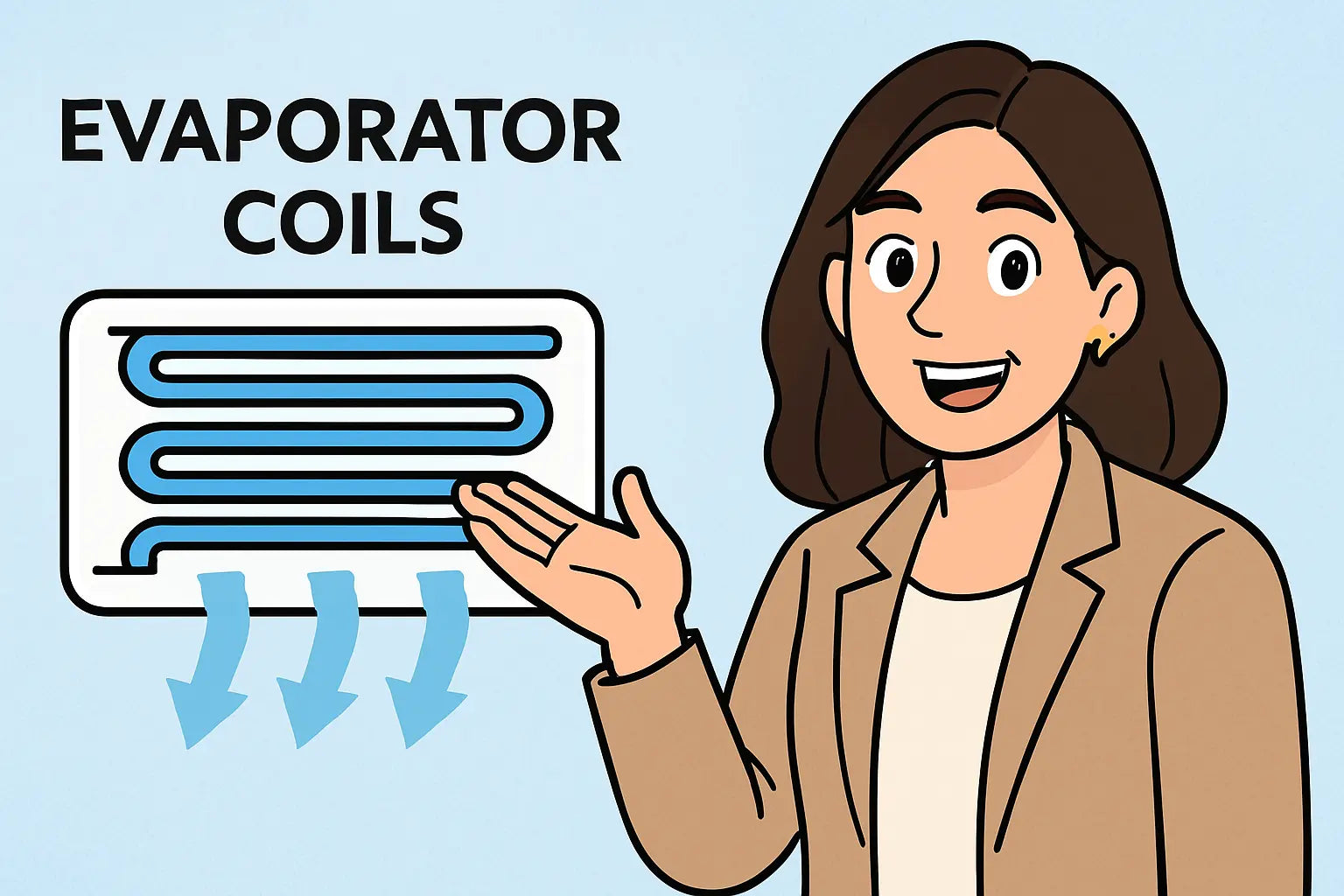Hey HVAC Heroes and Handy Homeowners! 🌟
Savvy Mavi here—your no-nonsense guide to making smart moves when it comes to your heating and cooling system. Today, we’re diving into a debate that’s been bubbling in basements, garages, and utility closets for years: vertical vs. horizontal evaporator coils.
If you’re shopping for a new coil from The Furnace Outlet’s coil collection, you might have already seen those orientation labels. But what do they really mean for your home’s airflow, energy efficiency, and maintenance schedule?
Let’s break it down—no jargon, no overwhelm, just straight talk with a side of sparkle. ✨
The Basics: What Are Vertical and Horizontal Coils Anyway?
In HVAC-speak, orientation refers to how your evaporator coil is installed relative to airflow:
-
Vertical coils are installed in an upflow or downflow system—meaning air moves vertically.
-
Horizontal coils sit in systems where air moves side to side, typically in attics or crawl spaces.
🏠 Vertical = Think closets and basements
🌬️ Horizontal = Think attics and tight crawl spaces
According to HVAC School, airflow orientation affects how heat is transferred across the coil, so choosing the wrong one can reduce system performance and even shorten its life.
Vertical Coils: Pros, Cons, and Ideal Setups
👍 Best For:
-
Homes with a utility closet or basement furnace
-
Downflow or upflow systems
-
Easy filter access and maintenance
✅ Pros:
-
Compact, ideal for stacked configurations
-
Typically more efficient at draining condensate
-
Easier to integrate with most furnace and blower combos
🚫 Cons:
-
May be harder to access in tight spaces
-
Usually requires more height clearance
Savvy Tip:
If your current furnace is vertical, stick with a vertical coil. Swapping orientation is not a weekend DIY—it’s a full-blown retrofit, and probably not worth the cost or headache.
Horizontal Coils: Pros, Cons, and Best Uses
👍 Best For:
-
Attic or crawl space installations
-
Homes without basements
-
Side-to-side airflow systems
✅ Pros:
-
Built to lie flat in tight spaces
-
Often quieter due to location
-
Easy to install above or beside the furnace
🚫 Cons:
-
Drainage can be tricky—standing water = bad news
-
Cleaning and maintenance may require acrobatics
💧 Note: Horizontal coils must be installed with precise slope for condensate drainage. Improper installation can lead to water leaks and mold growth. Energy Vanguard has a great deep dive on this issue.
Don’t Forget: Coil Must Match Furnace Orientation
Choosing the wrong orientation isn’t just a fit issue—it’s a functionality issue. Coils are designed to match the direction of airflow in your HVAC system. If your furnace pushes air up, you need an upflow or vertical coil. If it pushes air sideways, you're in horizontal territory.
Trying to force a vertical coil into a horizontal setup can cause:
-
Reduced airflow
-
Frozen coils
-
Condensate leaks
-
Long-term system damage
Carrier’s tech guide breaks down coil orientations if you need the manufacturer’s perspective.
What If You’re Replacing a Coil in an Older System?
If you’re just replacing a leaky coil and not redoing your whole system, orientation is already dictated. But if you're upgrading everything—including ductwork, air handler, and furnace—you might have flexibility.
That’s when you want to talk to a licensed HVAC pro to weigh:
-
Ceiling height and available space
-
Local code restrictions
-
Future maintenance access
Here’s a fantastic reference from HVAC Know It All on when a horizontal installation makes sense, even in basements. 🔧
Savvy Mavi’s Quick Comparison Table
| Feature | Vertical Coil | Horizontal Coil |
|---|---|---|
| Airflow Direction | Upflow or Downflow | Side-to-Side |
| Best Placement | Basement/Closet | Attic/Crawl Space |
| Condensate Drainage | Generally better | Needs careful slope |
| Maintenance Access | Easier | Trickier |
| Space Requirements | Taller | Wider |
How to Know Which One You Have (or Need)
If you're not sure which coil you have—or need—start by looking at the direction of the ductwork. If the return duct is below and the supply is above, you're working with a vertical setup. If they’re on opposite sides of the unit, you’ve got a horizontal system.
Still scratching your head? Grab your phone, snap a few pics, and send them to a licensed HVAC technician.
Pro Tip: Consider All-Aluminum Coils
Whether you go vertical or horizontal, opt for all-aluminum coils if you want long-term durability. They’re less prone to corrosion and leaks, especially in humid or coastal areas. For a full comparison of copper vs. aluminum, check out this detailed HVAC.com article.
Final Thoughts from Savvy Mavi 💬
Alright, HVAC heroes—now that we’ve unpacked the difference between vertical and horizontal evaporator coils (and why it seriously matters), you’re way better equipped to make a smart, comfort-focused decision for your home setup. Whether you're working with a tight closet install, an attic nook, or a basement retrofit, knowing your coil type isn’t just a “nice-to-have”—it’s essential to optimizing airflow, efficiency, and long-term performance.
If you’re ready to upgrade, troubleshoot, or just browse what’s out there, don’t go into this blind. Head over to The Furnace Outlet’s full evaporator coil collection to explore top-rated coils that match your system’s size, orientation, and energy goals. You’ll find vertical and horizontal options from trusted brands, plus all the specs you need to make an informed buy.
Because in the world of HVAC, it’s not about guessing—it’s about knowing. And now? You know. 😉
Curious about evaporator coil sizing? Visit my guide: Evaporator Coil Match Game.
Catch ya next time,
– Savvy Mavi







